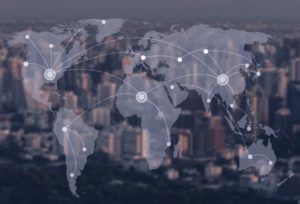
The CPG industry has had a difficult year, and the grocery market is no exception. Some of the most recognized and successful food brands are getting pressured at every turn, from health conscious and high-end consumers that are prioritizing healthy and fresh alternatives, to price-driven buyers flocking to cheaper store brands.
Even grocers and retailers are starting to turn their backs on Big Food. Rather than featuring CPG stalwarts – think brand-name snacks, frozen meals, canned goods, soda and the like – grocers are now giving prime shelf and display space to prepared foods, fresh alternatives and more modern, healthy and sustainable brands.
And the impact is going directly to the bottom line. According to Nielsen, CPG sales volume fell 2.4 percent in the first quarter of 2017, and for the year ending in February 2017, sales of packaged foods and beverages fell 0.4 percent. That might not seem like a lot, but when you compare it to the growth in fresh meats (1.7%), produce (1.9%) and deli-prepared foods (4%), the problem becomes clear.
As shoppers continue to fall in love with socially responsible brands, healthy and fresh food options and high-quality products shows no sign of slowing down – and where there’s strong and lasting affinity, there’s strong and lasting share of wallet. While the leading CPG brands will continue to lead the market – A.T. Kearney says the 25 largest food and beverage companies combine to own 63 percent of the nearly $500 billion in U.S. sales – market share is starting to slip away. And in an industry that profits off of volume, every percentage counts.
As CPG brands inches toward an existential crisis, leaders within the industry are asking themselves, where do we go from here? The answer lies within prioritizing the supply chain, supplier transparency and sustainability.
To start, the market continues to trend away from purchasing primarily based on brand name, and instead, toward healthier and responsibly-sourced products with natural ingredients. Brands must keep up by engaging their supply base to deliver more sustainable and healthier alternatives. If the supplier can’t change with the times, the brand needs to seek an alternative supply source. The impact on the bottom line is too significant to ignore.
Unilever has emphasized building sustainable brands and products, and now serve as the model for the CPG industry to follow. Six years into Unilever’s Sustainable Living Plan, the CPG company’s Sustainable Living brands grew more than 50 percent faster than the rest of the business, and delivered more than 60 percent of the company’s growth in 2016. These bottom-line results should be a loud wake up call to CPG brands across the globe, reminding them that, more and more, there is a deep connection between sustainability and sales.
Secondly, and just as important, CPG brands can’t hold back when it comes to embracing sustainability and transparency. It’s not enough to tweak a product ingredient here and there – brands need to prove the transformation to their customers. That’s only attainable for brands with superior supply chain transparency – procurement needs visibility into the performance of tier one, tier two and three suppliers to give marketing the ammo they need to build a more modern and in-demand brand.
By building more visibility and transparency with suppliers, brands are also able to address risk mitigation in a more effective way. With all the pressure facing the market today, the last thing these brands need to deal with is a supplier or manufacturing scandal, like the one recently reported around boxed macaroni and cheese.
Finally, in addition to high-quality and healthy products, consumers are flocking to socially conscious and modern brands that do good for the world. Let’s be honest, only a handful of CPG companies are looked upon as innovators in the social arena. CPG brands have the potential to lead the way and outperform any startup or upstart brand by investing in sustainable procurement and global CSR. The magnitude of their supply chains and the breadth of purchasing power give CPG companies and Big Food an advantage over nearly every competitor here – they just need to focus their resources on the issues that are making a difference to today’s consumer. The same can be said for sparking supplier innovation, uncovering supply chain savings and mitigating supply risk.
For global brands that are just beginning to come around to sustainability, creating a program that tracks, measures and helps improve supplier performance and product sustainability can seem daunting. However, the right system and approach has proven this thought to be wrong time and time again. Take it from Subway – which recently built a supplier monitoring and sustainable procurement program from the ground up.
While the competition is certainly heating up, the walls are not about to come crashing down for top CPG companies – that would be an overly alarmist view. But by applying some key adjustments to supply chain and procurement strategy – doubling-down on sustainable procurement, investing in supply chain transparency and prioritizing the responsible sourcing of products and materials – the CPG market can position itself to win back consumer confidence and reinforce their leading competitive position in the market for years to come.
Learn more on how to move along the reposible sourcing journey in our upcoming webinar with client Ferrero. Register today!
Find out more about what EcoVadis is doing for other CPG members, including Nestle and Coca-Cola European Partners.
About the Author
Follow on Twitter Follow on Linkedin Visit Website More Content by EcoVadis EN

